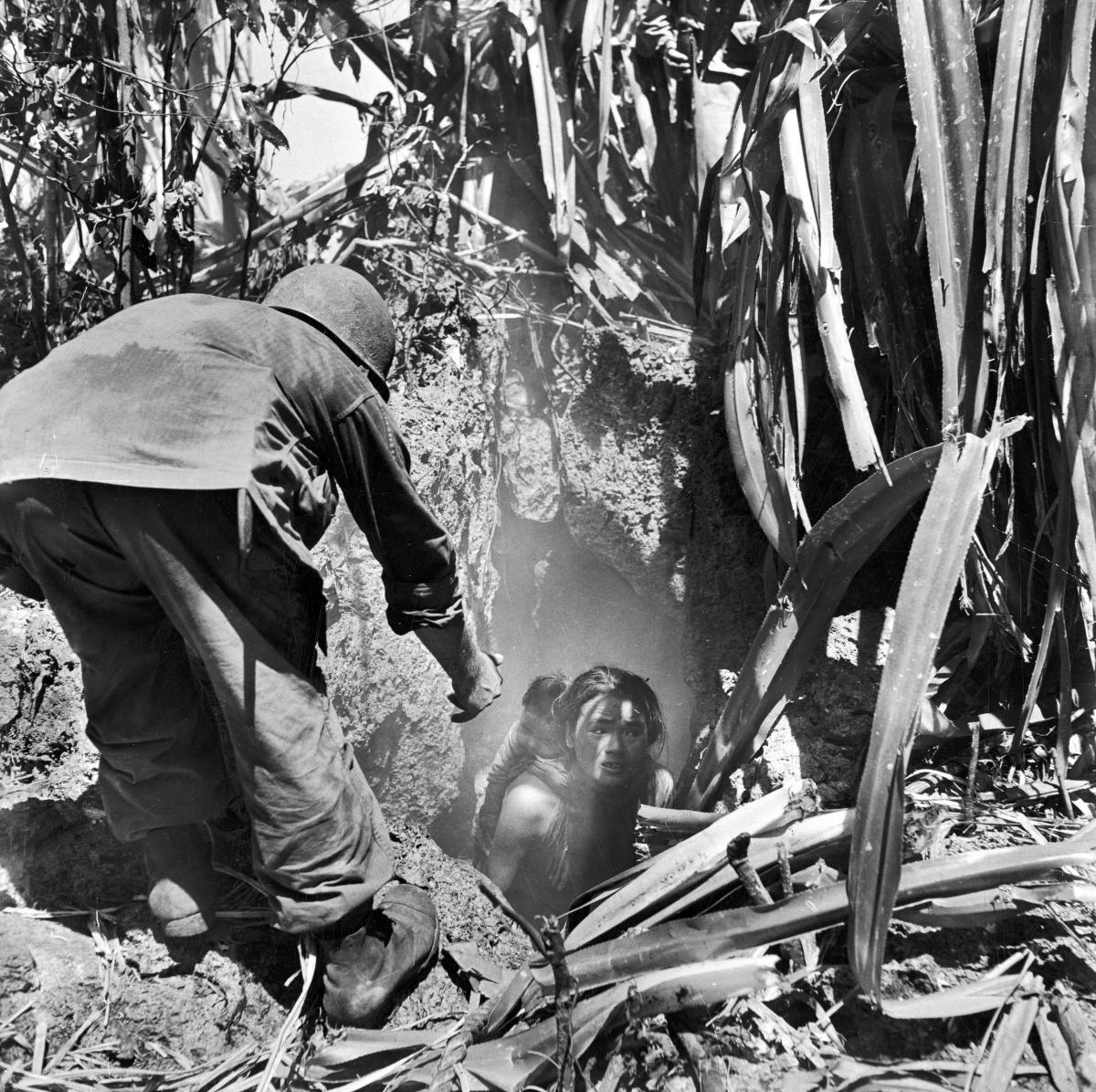In the Commonwealth of the Northern Mariana Islands, rusting tanks and decrepit fortifications covered with vines are slowly but surely sinking into the sand, sea, and forest. Living memories are fading into second-hand stories and third-hand myths. If nature had its way, the Battle of Saipan would soon be forgotten.
At risk, too, is the unique culture of the western Pacific island chain of more than 50,000 people. The Chamorro people have lived in the Mariana Islands for over 2,000 years, but 75 years of outside influence have seen a precipitous decline in the number of native speakers of the Chamorro language, as well as the decline of numerous cultural traditions, including the practice of spherical astronomy. Without conscious effort to preserve the local culture, the siren song of blue jeans and rock ’n’ roll would soon drown out the distinctiveness of the islands’ history.
Resisting the forces of cultural and geological entropy is the Northern Marianas Humanities Council, under the leadership of Leo Pangelinan, and its flagship radio program, Your Humanities Half Hour. For ten years, Catherine R. Perry has taken to the airwaves to interview reporters, teachers, and cultural figures in an effort to preserve and promote the local culture of the Mariana Islands. The program serves as a loudspeaker: Local culture is put on the same stage as sports, national news, and foreign music. It also serves as a vault for preserving indigenous folkways, stories, and traditions.
Perry, who was born in Maine but relocated to the Marianas at the age of ten, was not supposed to be behind the mic when Your Humanities Half Hour was conceived. Her background was more technical, she notes. “My first job fresh out of high school was at local radio station KSAI in Saipan as a radio operator.” She went on to study broadcasting at Evangel University in Springfield, Missouri, before returning to the Mariana Islands to work in communications and radio. While she had never hosted a program before Your Humanities Half Hour, as the program approached its launch date, no one on staff could think of a better person to host than Perry. She accepted the offer and hasn’t looked back.
A recent episode featured David Sablan, who was twelve years old during the Battle of Saipan in 1944. During the war, Sablan and his classmates were used as forced labor to build a runway for the Japanese Air Force. The native Chamorro and Carolinians were treated as inferior to both the Japanese, who controlled the islands, and other East Asian immigrants serving in the colonial administration. During the battle itself, Sablan and his family fled to a cave in the interior of Saipan, where for two weeks they subsisted on nothing but sugar cane, which had to be harvested in secret. Eventually, they were discovered by U.S. Marines who heard a baby crying below them in the cave. Sablan has never forgotten the kindness shown by the Marines and the U.S. occupying forces; he firmly believes that under U.S. control Mariana Islanders “have learned a lot about the U.S. Constitution and the freedom enjoyed by all.”
Sablan’s story is difficult for him to tell, and he pauses often. This dead air could have been edited out, but, as Perry notes, “dead air tells a story as well.” However, Sablan also cracks a few jokes, pointing out that despite weeks of eating nothing but sugar cane, “I still have very strong teeth!”
Thanks to Perry and her guests, the show manages to strike a balance between sobriety and levity when discussing topics as fraught as nuclear-waste disposal, hurricane recovery, and, in this case, the horrors of war.
Ensuring easy access to the humanities is a challenge for all of NEH’s state and territorial affiliate organizations, but the Northern Mariana Islands present a particular challenge. The islands of Saipan, Tinian, and Rota, where the vast majority of the population lives, are separated from each other by tens of miles of open ocean. This makes it difficult for people living on one island to attend live speeches and exhibitions held on another; you can’t simply hop in your car and drive over. Your Humanities Half Hour helps solve this problem, as nearly everyone on the islands has access to a radio.
According to Scott Russell, the executive director of the NMHC when Your Humanities Half Hour was launched, the creators believed “that a radio program airing on Sunday afternoons (when many families in the community gathered for social events) would be an effective medium through which to reach people in their homes, at the beach, or at other venues on a traditional day of rest and recreation.”
Your Humanities Half Hour is broadcast every Sunday afternoon on Power 99, which also reaches Guam, a place with strong cultural and linguistic ties to its neighbors to the north. In January, the Northern Marianas Humanities Council began uploading new episodes to their YouTube channel. This change comes alongside other efforts by the NMHC to raise the profile of the Mariana Islands outside of the Pacific region, efforts prompted by Typhoon Yutu, a Category 5 hurricane that struck the island chain last year. Despite causing extensive damage to the islands, the hurricane received little coverage from the U.S. media because, in large part, Perry notes, “most Americans don’t even know we exist.”




